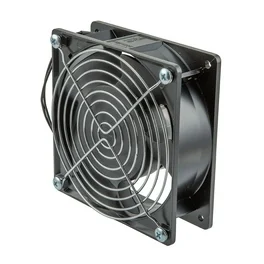How Integrated Cooling Solutions Improve the Performance of Industrial Machinery
Integrated cooling solutions play a crucial role in improving the performance, longevity, and efficiency of industrial machinery. These solutions are designed to regulate the temperature of machinery and its components to prevent overheating, reduce wear and tear, and optimize overall system functionality. In many industrial environments, machinery operates under heavy loads, often in high-temperature conditions. Without effective cooling, components like motors, pumps, bearings, and electronics can experience excessive heat buildup. This can result in thermal expansion, material degradation, and even complete system failure. The introduction of integrated cooling systems helps mitigate these risks by maintaining optimal operational temperatures and ensuring that machinery functions at its best. One of the main types of integrated cooling solutions is liquid cooling, where a coolant is circulated through a network of pipes or heat exchangers to absorb heat from the machinery. This coolant is typically a mixture of water and other fluids designed to maintain a stable temperature.

Liquid cooling is highly effective as it can absorb and transfer large amounts of heat over a small surface area, making it ideal for applications requiring high heat dissipation, such as in industrial refrigeration systems, large manufacturing plants, or power stations. Air cooling is another widely used solution, where fans or blowers direct air across hot components to promote heat dissipation. While not as efficient as liquid cooling, air cooling is often simpler to implement and more cost-effective for machinery operating in environments where extreme temperature fluctuations are less of a concern. Air-cooled systems are frequently found in smaller machines or those that do not require high heat dissipation rates, such as smaller electrical motors or light industrial equipment. In addition to traditional cooling methods, integrated cooling solutions are often combined with other technologies like heat exchangers, thermal storage, and phase change materials. Thermal storage systems can store excess heat and release it gradually, reducing peak temperatures and minimizing thermal shock to the equipment.
Phase change materials, which absorb and release heat during phase transitions from solid to liquid, are also integrated into many industrial machines to regulate temperature fluctuations. The primary advantage of integrated cooling systems is their ability to maintain consistent operating temperatures. By preventing overheating, cooling systems help preserve the integrity of machine parts, reducing the frequency of maintenance and extending the lifespan of expensive components. Furthermore, effective cooling minimizes energy consumption since machinery operates more efficiently at its optimal temperature, reducing the load on power systems and lowering overall operational costs. This proactive approach to temperature management leads to fewer unplanned downtimes and enhances productivity. The acdc cooling solutions are vital for improving the performance of industrial machinery. By efficiently managing heat, they not only protect the equipment from damage but also optimize its performance, energy efficiency, and lifespan.